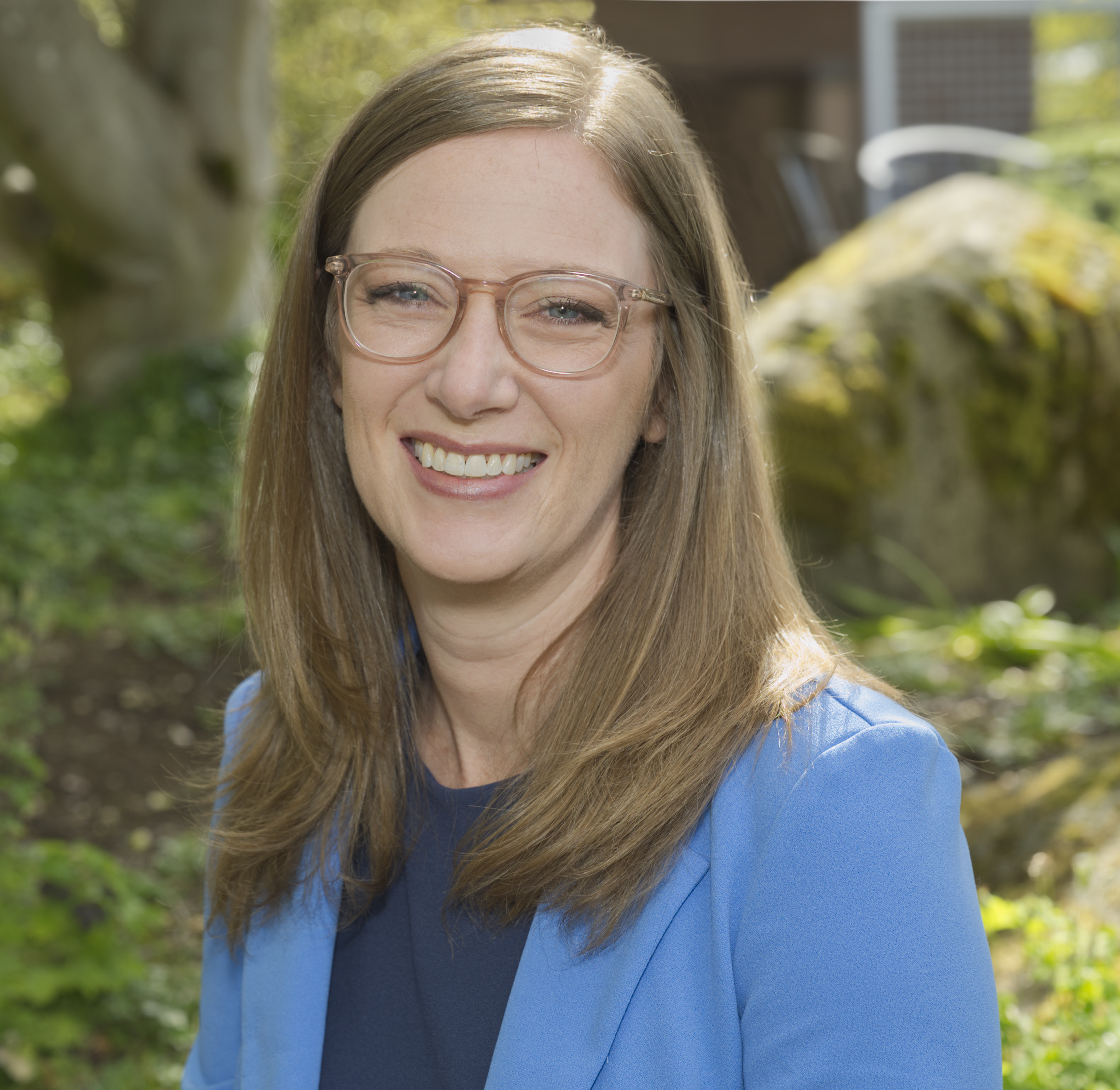
It all depends on clinical reasoning in occupational therapy

When kids in grade five are asked what they want to be when they grow up, you might expect to hear doctor, firefighter, president, or movie star. You might not expect to hear “Occupational therapist!” Yet for Assistant Teaching Professor Keri DeGroot, her heart was set on occupational therapy (OT) from a very young age, and she never wavered.
It all started when her best friend’s cousin had a shunt (a tube that helps drain excess fluid) replaced in her brain and experienced complications. The young girl had to relearn how to walk, talk, eat, and more. Keri went with her friend to the cousin’s OT appointments and became fascinated by how therapists used everyday objects to help the girl regain her abilities. “I can remember [the OT] holding up her favorite stuffed animal, and my best friend’s cousin reaching for it. And I was like, that’s what I want to be.”
Keri pursued this dream throughout her undergraduate and doctorate degrees at Washington University in St. Louis. As she explored various career paths within OT, she remained captivated by the one-on-one aspect of clinical practice. Yet, when she had the opportunity to take a teaching assistant position, she found herself equally drawn to education. “As a true OT clinician, what I found particularly fascinating about teaching was the one-on-one aspect, and not classroom management or curriculum—ironic because now I’m curriculum planning—but it was really about how do you get one student from point A to point B?”
“[AI]...it’s not going to replace the judgment and problem-solving skills that OTs have honed over time.”
For about a decade, Keri stayed at Washington University, balancing part-time teaching with part-time clinical work. “It was just the perfect balance for me,” she explains. “I loved bringing what I had done just that day, or just the day before, into my teaching. And I loved having to look at the research evidence for what I was teaching and then bring that straight to my clinical practice the next day. It was just this beautiful combination for me, for a really long time.”
When her husband’s career prompted a move to Seattle six years ago, Keri worked in skilled nursing facilities around the area, all the while keeping an eye out for opportunities at UW. Finally, during the pandemic, the right opportunity emerged. Pandemic restrictions reduced the number of students allowed in labs at one time, creating a need for more teachers. Around the same time, former Program Director Janet Powell retired, leaving a gap that Keri’s experience perfectly filled. It was the job she had always wanted.
As a teacher, Keri now focuses on helping students develop their problem-solving skills. “Our students would love cookbook recipes on how to treat a client with stroke or whatever condition. Yet, we have a big “it depends” sign in the back of the classroom. But” Keri smiles, “you want it to depend. That's what makes our job so interesting.” She emphasizes to her students that paying attention to what follows “it depends” is crucial—because that’s where clinical reasoning takes place. Every situation is unique, and every client has different needs. While the approach may vary, the logical framework and systems for problem-solving remain constant.
This emphasis on clinical reasoning leads naturally to Keri’s current research, which focuses on the role of artificial intelligence (AI) in OT. She recently received a grant to study AI alongside fellow faculty members Lauren Butler, Laura Johnston, and Cody McDonald. The group is exploring how students use AI, their training in the technology, and potential pitfalls and biases that may arise.
One potential use for AI that Keri sees on the horizon is in professional documentation. OTs must document their therapy sessions using specialized professional language to communicate with insurers and other providers, while also explaining medical concepts in simpler terms for clients. This is essentially a form of translation, and AI has the potential to make this process faster, easier, and more accessible, particularly for those who speak English as an additional language. However, as Keri points out, “While AI may be able to write up visit notes in a clear and consistent way, it’s not going to replace the judgment and problem-solving skills that OTs have honed over time.”
As the Division of Occupational Therapy celebrates its 65th anniversary, Keri is excited about the profession’s future. OTs play a critical role in enhancing the health and wellbeing of individuals and communities, working across the lifespan—from babies in the NICU to older adults in palliative care. The versatility of OT, she believes, ensures that the field will continue to grow and adapt to meet the evolving needs of society.